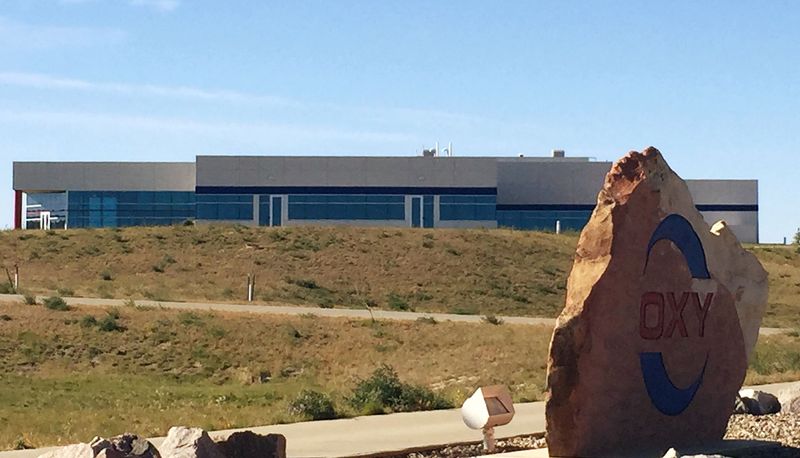By Sabrina Valle and Ruhi Soni
HOUSTON (Reuters) - U.S. oil producer Occidental Petroleum Corp (NYSE:OXY) on Wednesday increased by about 22% its estimated investment for the world's first large-scale direct air capture (DAC) project and disclosed plans to build others.
The Houston-based company now expects to spend $1.1 billion on the project under construction in Ector County, Texas, up from the previous estimate of $800 million-$1 billion.
"Inflationary pressures felt across the economy, especially for construction materials and labor," explain the added costs, Chief Executive Officer Vicki Hollub told analysts in a webcast to discuss the company's third-quarter results.
Occidental is aiming to build a profitable business by pulling CO2 out of the air and burying it underground. It bets the world will need oil for decades to come and that government and business climate goals will only be achieved if emissions are not only reduced, but also actively removed from the air.
The technology will be a cash drain for investors until it becomes commercially viable, and the time needed to achieve that is unclear. Occidental's first large-scale project started construction in September and is on schedule to begin operations in late 2024.
The company on Wednesday expanded future plans for DAC, betting that starting projects in sequence would reduce costs. Government incentives and passage of the Inflation Reduction Act allow it to plan 100 DAC facilities by 2035, from 70 before, Hollub said. Land for half of them has been secured.
"It's not as well recognized yet. But when the world realizes how much the transition will cost, I do believe that this will become the preferred option to ensure that we can continue the production of low carbon fuel for those that need it," Hollub said.
Occidental's first DAC plant progress is closely watched by the oil industry for its scale. It has a goal of removing up to 1 million tonnes of CO2 from the atmosphere per year - 100 times more than all the 18 DAC plants operating worldwide combined, according to the International Energy Agency.
In October, it started planning and engineering for DAC facilities at a second Texas site, in Kleberg County, with a combined capacity to remove 30 million tonnes of CO2 annually.
Shares of Occidental fell 9.3% following the call to discuss its quarterly results, which slightly missed Wall Street estimates. Shares of energy firms fell across the industry.
Occidental's shares have more than doubled this year. The company had attracted the interest of Warren Buffett's Berkshire Hathaway (NYSE:BRKa) Inc, now Occidental's largest shareholder, with a 20.9% stake.

The company has been using the cash from high oil prices (CLc1) to pay down debt and plans to reduce it to $18 billion until the end of the year, exceeding its previous target by $2 billion.
Starting next year, the company will "have significantly more capital available," which Hollub said "will be allocated mostly" to share buybacks.
